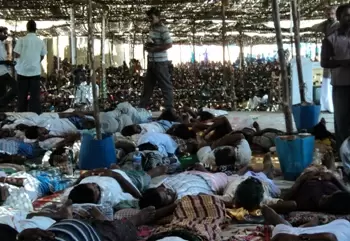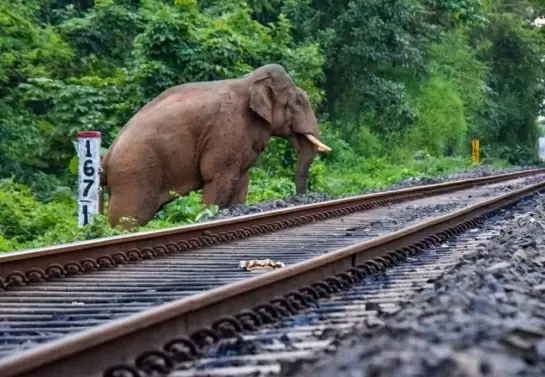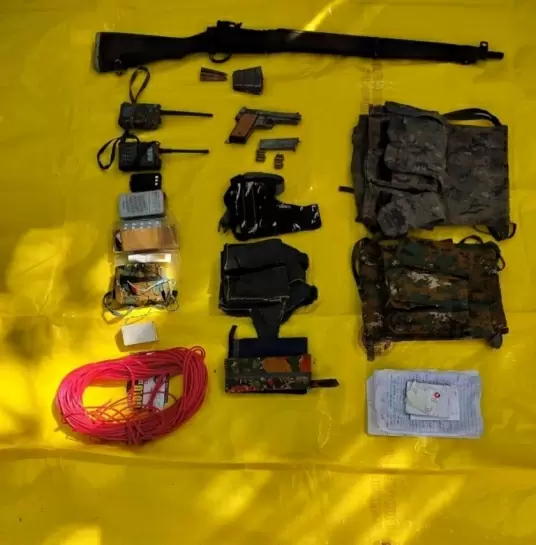‘Koodankulam power plant safe from earthquake, tsunami’

01-October-2011
Vol 2 | Issue 39
The Nuclear Power Corporation of India (NPCI) has issued a Statement titled ‘Facts on Kudankulam Nuclear Power Project.’ Some of the information provided in it is in direct conflict with positions taken by anti-Koodankulam activists.
While The Weekend Leader supports the struggle of local people opposed to the project, we find certain truth in charges that some professional activists may be fishing in troubled waters and indulging in a disinformation campaign.
 |
|
Protestors staging a hunger strike in Koodankulam
|
We could have taken a populist stand and outright opposed nuclear power as too dangerous to employ and demanded a moratorium on all atomic power projects in the country.
The Weekend Leader is unable to take such a stand at this point of time. We are therefore joining the rest of the media in taking a ‘balanced’ position on nuclear energy.
Given below are some of the main points from the NPCI Statement in favour of the project:
1. An exclusion area of appropriate size (at least 1.5 km radius from the reactor centre) shall be established around the reactor and entry to this is to be restricted to authorized personnel only. Thus the population falling within the exclusion zone, if any, is only resettled. A sterilised area up to 5 km around the plant shall be established by administrative measures where the growth of population will be restricted for effective implementation of emergency measures. Natural growth, however, is allowed in this zone.” Thus, there is no displacement involved in the sterilized zone. In fact, there are no restrictions on natural growth of population in the sterilized zone.
2. The operation of nuclear power plants in the country at the coastal locations at TAPS, Tarapur in Maharashtra and MAPS at Kalapakkam in Tamilnadu has also not shown any adverse effects on marine life including the fish. At Department of Atomic Energy-Board of Research in Nuclear Sciences (DAE-BRNS) Thermo-ecology study was carried out at Kalpakkam and Kaiga stations with several experts from institutions like National Institute of Oceanography (NIO), Central Electro Chemical Research Institute (CECRI) and several universities of the country. These studies have not found any adverse effect on marine ecology around the nuclear power plant sites.
3. An Environmental Survey Laboratory (ESL) is set up at the site before the start of operation of the reactors, which collects data of several environmental matrices like air, water, soil, vegetation, crops, fish, meat, etc. It establishes a baseline. Subsequent to start of operation of the station, the ESL monitors the environmental matrices even beyond emergency planning zone of 16 km (usually up to 30 km of the site) for radioactivity (elements like Iodine-131/133 Strontium-90 etc) and radiation levels. The experience over the last 40 years has been that at such distances no significant increase in radiation levels above the baseline data is found at Indian nuclear power plant sites.
4. The safety features of Kudankulam project have been comprehensively reviewed by a task force of NPCIL in the context of the recent Fukushima accident and it has been found that the safety features of the reactor are adequate to withstand such extreme natural events. The report of the task force is available on websites of NPCIL and DAE.
5. Kudankulam site is located in the lowest seismic hazard zone of the country, Zone-II. The nearest epicenter of a recorded earthquake was located near Trivandrum, which is situated at a distance of 88 km north- northwest of the Kudankulam site, where two earthquakes corresponding to 4.3 magnitudes on Richter scale, were recorded. The Kudankulam site has a much lower seismic hazard when compared to Fukushima in Japan. The Kudankulam plant buildings have been designed for much larger earthquakes.
6. Kudankulam site is located far off (about 1500 km) from the tsunamigenic fault (where tsunamis originate). Thus a tsunami would take time and lose some of its energy by the time it strikes Kudankulam site. As against this, the tsunamigenic fault was only about 130 km away at Fukushima. The Kudankulam site was not affected by the 2004 Indian Ocean tsunami due to its design of higher finished floor level. The water level experienced at the site due to December 26, 2004 tsunami triggered by a 9.2 magnitude earthquake was 2.2 m above mean sea level.
7. The approved cost of the project is Rs. 13171 crore. The expenditure figures are submitted to the various monitoring agencies of the project like DAE, MOSPI and Parliamentary Committees and are thus in the public domain. The tariff of electricity generated by the project will be competitive with other sources in the region and expected to be around Rs 2.50 per unit.
The author is Editor of The Weekend Leader















